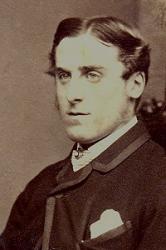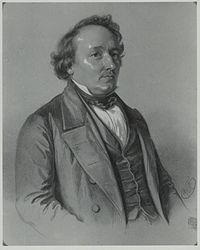Planning worship?
Check out our sister site, ZeteoSearch.org,
for 20+ additional resources related to your search.
- |
User Links
Person Results
‹ Return to hymnal


Export as CSV
Clement Cotterill Scholefield

1839 - 1904 Person Name: fr. Scholefield Hymnal Number: 289 Arranger of "IRENE" in Laudes Domini Rev. Clement C. Scholefield (b. Edgbaston, near Birmingham, Warwickshire, England, 1839; d. Goldalming, Surrey, England, 1904) Educated at St. John's College, Cambridge, he was ordained in the Church of England in 1867. He served at Hove, Brighton, St. Peter's in Kensington (1869-1879), and briefly at St. Luke's in Chelsea. From 1880 to 1890 he was chaplain at Eton College and from 1890 to 1895 vicar of Holy Trinity in Knightsbridge. Mainly self-taught as a musician, Scholefield became an accomplished pianist and composed some songs and hymn tunes.
Bert Polman
Clement Cotterill Scholefield
Joseph Swain
1723 - 1792 Hymnal Number: 350 Author of ""Jehovah Jireh"" in Laudes Domini Joseph Swain born in 1723 in Reading, Mass, graduated at Harvard College in 1744; was schoolmaster at Reading in 1746; was ordained as pastor of the Congregationalist Church at Wenham, Mass in 1750. He was the author of several hymns. He was pastor of his church for forty-two years, until he died June 27, 1792.
Swain and allied families, compiled by William C. Swain, Milwaukee,Wis: Press of Swain & Tate Company, 1896
Joseph Swain
Sarah Slinn
1758 - 1831 Hymnal Number: 189 Author of "Immanuel" in Laudes Domini Slinn, Sarah. In the Gospel Magazine for July 1779 a hymn in 9 stanzas of 4 lines was given beginning "God with us! 0 glorious Name;" headed "Emanuel; or, God with us. By a Lady," and signed "S. S—N." In Rippon's Baptist Selection, 1787, st. i. ii. vi. iii. iv. with alterations, and in the order named, were given as No. 174, but without signature. In J. Dobell's New Selection, 1806, the same text is repeated as from Wood's Collection The same text was again repeated to modern hymnbooks, and is that now in common use. From D.Sedgwick's manscripts we find the signature "S. S—N." was filled in as Sarah Slinn by him, but his papers do not furnish any authority for the name, nor for the date of 1777 which he has attached thereto in his manuscript note to Dobell's New Selection.
--John Julian, Dictionary of Hymnology (1907)
Sarah Slinn
Karl Rudolf Hagenbach

1801 - 1874 Person Name: fr. K. R. Hagenbach Hymnal Number: 462 Translator of "Resting in God" in Laudes Domini Hagenbach, Carl Rudolph, D.D., s. of C. F. Hagenbach, professor of medicine at Basel, was born at Basel, March 4, 1801. He studied at the Universities of Basel, Bonn, and Berlin. He returned to Basel in 1823 as University lecturer on Church history, was appointed ordinary professor of Church history in 1829, and died at Basel, June 7, 1874 (Koch, vii. 95, 96; Allg. Deutsche Biographie, x. 344, 345, &c). His hymns appeared principally in his Gedichte, Basel, 1846. Two are translated:—
i. Du Quell, der alle Herzen tranket. Passiontide. On Christ thirsting on the cross. 1846, as above, vol. i. p. 33, in 4 stanzas. Translated as "Thou fountain for the panting heart," by J. Kelly, 1885, p. 40.
ii. Stille halten deinem Walten. Resignation. On patient waiting on God, founded on Ps. lxii. 2. In his Gedichte, 1846, vol. i. p. 85, in 8 stanzas of 6 lines; and in Knapp's EvangelicherLieder Schatz, 1850, No. 1947. Translated as:—
Since thy Father's arm sustains thee, a free tr. of st. i.-v. in the Family Treasury, 1861, p. 293; and in the Gilman-Schaff Library of Religious Poetry, ed. 1883, p. 525, marked as tr. by “H. A. P." Included as No. 884 in Laudes Domini, N. Y., 1884. [Rev. James Mearns, M.A.]
-- John Julian, Dictionary of Hymnology
Karl Rudolf Hagenbach
Giovanni Mane Giornovichi
1745 - 1804 Person Name: J. M. Giornovichi Hymnal Number: 595 Composer of "ST. ASAPH " in Laudes Domini
Giovanni Mane Giornovichi
Richard Farrant
1525 - 1580 Person Name: R. Farrant Hymnal Number: 67 Composer of "FARRANT" in Laudes Domini Like many composers of his day, the early years of Richard Farrant’s (c.1525- November 30, 1580) life are not well documented. The first acknowledgment of him is in a list of the Gentleman of the Chapel Royal in 1552. It is assumed from that list that his birth was around 1525. Although, that cannot be accurately determined. During his life he was able to establish himself as a successful composer, develop the English drama considerably, founded the first Blackfriar Theatre, and be the first to write verse-anthems. He married Anne Bower, daughter of Richard Bower who was Master of the Chapel Royal choristers at the time. With Anne he conceived ten children, one of whom was also named, Richard.
As a member of the Gentleman of the Chapel Royal, Farrant was active in ceremonies surrounding the royal family. He began his work with the Chapel Royal around 1550 under the reign of Edward VI. Fortunately, for Farrant, this is a time that saw huge developments in Latin Church Music. Composers like William Byrd and Christopher Tye were busy expanding and elaborating on the Church Music of the day. In Farrant's twelve years with the Chapel Royal, he was able to participate in funerals for Edward VI and Mary I, and coronations for Mary I and Elizabeth I. After his work there, he took up a post as organist at St. George’s Chapel at Windsor.
For Farrant, the post at at Windsor became a permanent one that he retained for the rest of his life. Along with this, he also acquired the position of Master of the Chapel Royal choristers in November of 1569. Having the choirs of both of these institutions at his disposal gave him an outlet to showcase all of his compositions and plays. In fact, every winter he was able to produce a play for the Queen herself. These positions also allowed him to move back to London in 1576 and begin a public theater of sorts where he rehearsed some of his choir music openly. It was soon after, in 1580, that he passed away, having left his house to his wife.
Unlike many composers of his day that stuck to only music composition, Farrant also wrote many plays. One of his most important contributions to drama in England is of course the creation of the first Blackfriars Theatre. This eventually became one of the most important places in London for drama to develop during the Renaissance. Farrant is also one of the earliest and most well known composers that began to mix the two mediums of music and drama. It was this uncommon mixture that allowed him to begin to develop the composition style of 'verse.' This becomes prominent in a lot of his pieces including the anthems "When as we sat in Babylon" and "Call to remembrance" and "Hide not thou thy face."
--en.wikipedia.org/wiki/
Richard Farrant
Henry K. Oliver
1800 - 1885 Person Name: H. K. Oliver Hymnal Number: 409 Composer of "FEDERAL STREET" in Laudes Domini Henry Kemble Oliver (b. Beverly, MA, 1800; d. Salem, MA, 1885) was educated at Harvard and Dartmouth. He taught in the public schools of Salem (1818-1842) and was superintendent of the Atlantic Cotton Mills in Lawrence, Massachusetts (1848-1858). His civic service included being mayor of Lawrence (18591861) and Salem (1877-1880), state treasurer (1861-1865), and organizer of the Massachusetts Bureau of Statistics and Labor (1867-1873). Oliver was organist at several churches, including Park Street Congregational Church in Boston, North Church in Salem, and the Unitarian Church in Lawrence. A founder of the Mozart Association and several choral societies in Salem, he published his hymn tunes in Hymn and Psalm Tunes (1860) and Original Hymn Tunes (1875).
Bert Polman
Henry K. Oliver


 My Starred Hymns
My Starred Hymns


